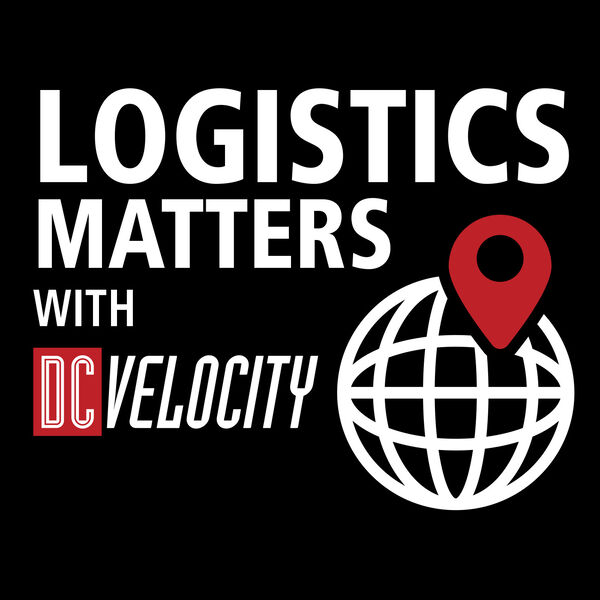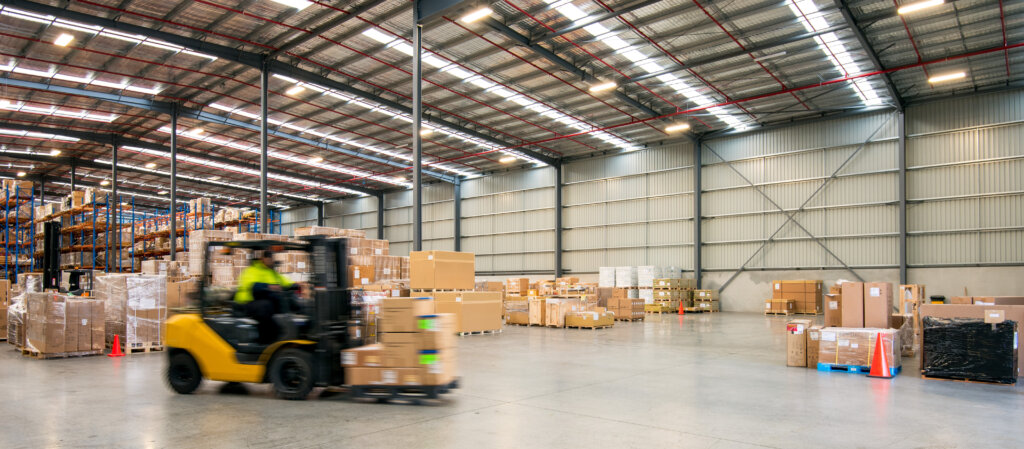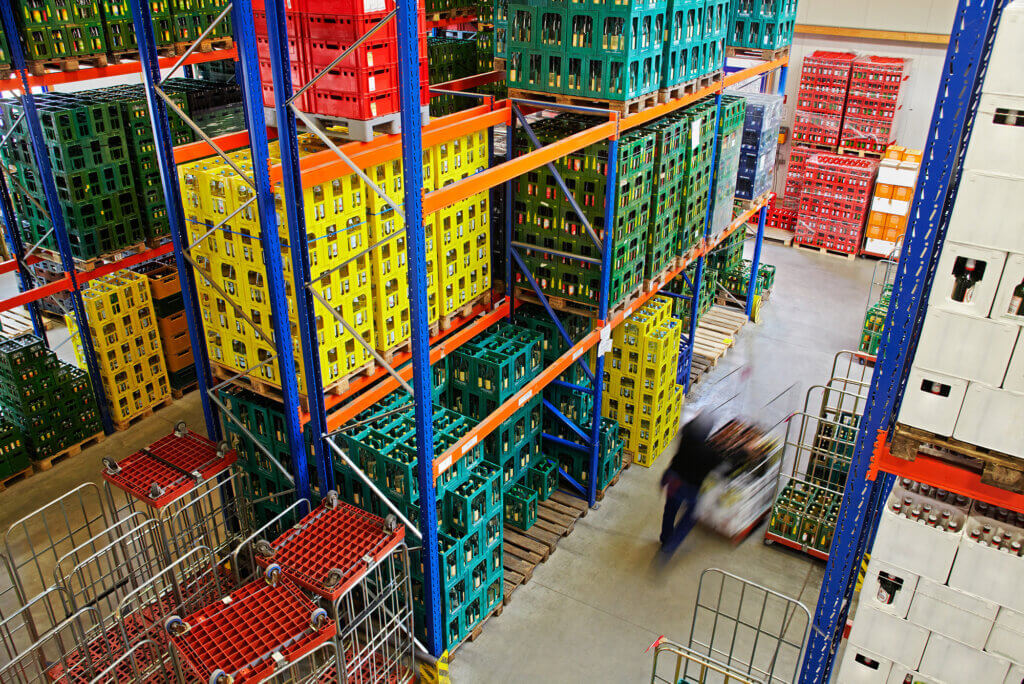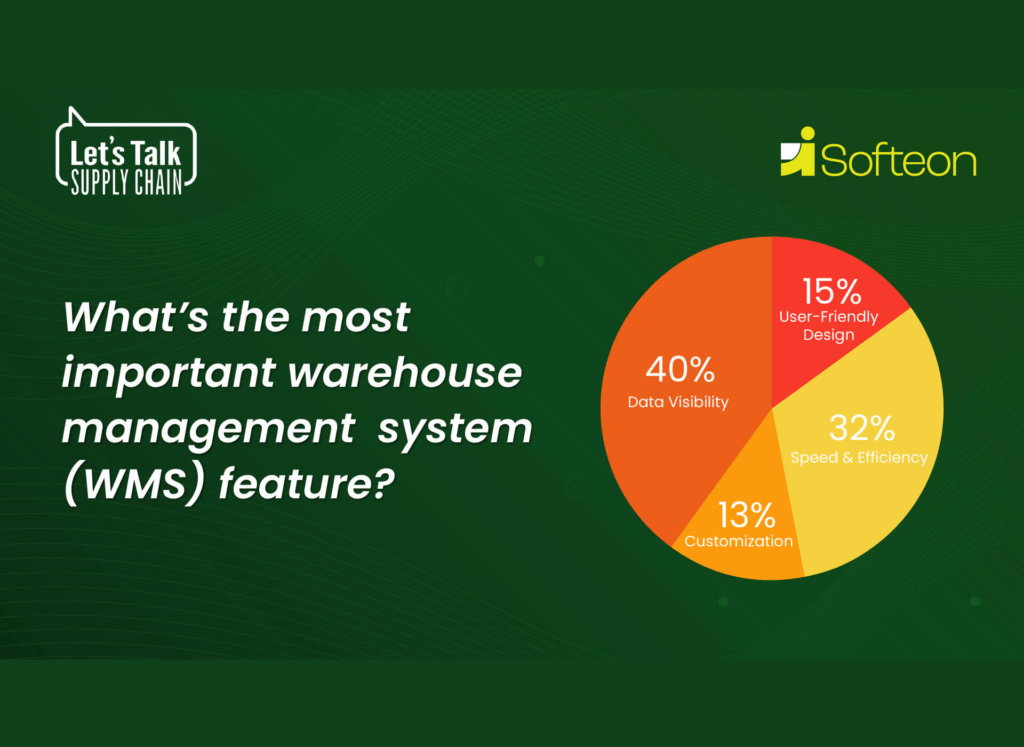Softeon on how WMS systems can interact with complex automation | Season 2 Episode 23
06.11.21
Today’s warehouse management software systems are being developed to handle the huge surge in robotics and other warehouse automation systems; the White House releases a report on America’s supply chains; highlights from National Forklift Safety Day 2021; funding for Mississippi River transportation.
Source: DCVelocity.com
Full Transcript:
David Maloney, Editorial Director, DC Velocity 00:00
Warehouse software systems prime for more automation. The White House reveals its report on America’s supply chains. New efforts to aid river traffic on the Mississippi. And look back at National Forklift Safety Day. Pull up a chair and join us as the editors of DC Velocity discuss these stories, as well as news and supply chain trends, on this week’s Logistics Matters podcast. Hi, I’m Dave Maloney. I’m the editorial director at DC Velocity. Welcome.
Logistics Matters is sponsored by Honeywell Intelligrated. From system design and emulation to integrated warehouse automation software and technologies to AS/RS shuttles and robotics, Honeywell Intelligrated’s end-to-end solutions address the most pressing e-commerce and labor challenges facing our industry. To learn more, visit sps.honeywell.com.
As usual, our DC Velocity senior editors Ben Ames and Victoria Kickham will be along to provide their insight into the top stories of this week. And we’ll also be joined this week by contributing editor Toby Gooley. But to begin today, companies are adding new automation and robotics systems to their distribution facilities at a dizzying pace, and all of that requires sophisticated software to tie everything together for a smooth operation. Are today’s warehouse management systems up to the challenge? To address that topic, here is Ben with today’s guest. Ben.
Ben Ames, Senior News Editor, DC Velocity 01:31
Thanks, Dave. That’s right, we have a guest with us today, who’s Dan Gilmore. He’s the chief marketing officer with Softeon, who are a warehouse and logistics software provider. Dan, thank you for being with us this morning.
Dan Gilmore, Chief Marketing Officer, Softeon 01:45
Ben, glad to be here. Look forward to the conversation.
Ben Ames, Senior News Editor, DC Velocity 01:47
Great. As Dave had referred to a minute ago, we’ve seen a huge jump in automation, technology, robotics in the DC: autonomous mobile robots, picking arms, good-to-person flows, wearables, you know, at the same time, a huge jump in e-commerce and that pressures for next-day delivery. What are some of the challenges that you’ve seen for installing warehouse management system—WMS—platforms today, that might have been different from five years ago or 10 years ago?
Dan Gilmore, Chief Marketing Officer, Softeon 02:20
Sure. Well, you know, the reality of it is, of course, taht much as the same, right? I mean, so one of the unique, you know, characteristics of a WMS, apart from any other supply chain application, is the need to synchronize kind of the logical world and the real and the physical world, and do so in real time, and that just doesn’t isn’t the case for things like supply chain planning or network design or any number of other supply chain—even transportation management, to an extent, is not quite the same as that. So, it’s just presents some real challenges that I think will be with us for a long, long time. But as you stated, you know, the challenges are evolving. Fåirst, clearly, there’s a lot more automation, there’s no question about that, as you indicated, driven by e-commerce. But, you know, there’s kind of two flavors of that, right? There’s the traditional automation that is still very prevalent, in terms of things like conveyor transport and automated sortation and those sorts of things, and then sort of a new generation of technology in terms of things like goods to person, mobile robots, even put walls, and things of that nature, so, you know, it’s just a different landscape now, and all of us are kind of evolving together in this kind of new paradigm. But, you know, really, there’s there really shouldn’t be that much of risk in the integration between the WMS and the automation if you know what you’re doing. What is the challenge more is just to fit the integration to the kind of physical equipment. It’s just all the process complexity that’s going on in our world today, both driven by automation and in part, in terms of services and, you know, customer requirements that have to be met uniquely, and the dependencies that are in the DC. So, when you have multiple steps and multiple stages in the process of order fulfillment, you have these dependencies that are going to affect the throughput of up- and downstream systems. So, going back to the put walls that I referenced a second ago, if you have delays upstream, you’re going to starve that pool and slow down the turns of those cubbyholes. Hopefully people know what a put wall is. But it’s going to slow down the turning of those cubbyholes, how fast an order is processed, which is the whole key to success and ROI, right? So, what’s different now is that you really have to be more cognizant of all the flows and their dependencies and synchronize those in a way that’s going to have a steady flow of work and neither overload or starve individual process areas.
Ben Ames, Senior News Editor, DC Velocity 04:46
Got it, yeah, I mean, it’s a great point about tying together those digital and physical worlds. So, I mean, what happens if it doesn’t go well? What are the potential risks or the costs for a user if a WMS installation takes longer than expected, or if it struggles to integrate all those different platforms?
Dan Gilmore, Chief Marketing Officer, Softeon 05:04
Sure. Well, there’s—it causes big problems, that’s for sure. You know, there’s obviously, the obvious risk of not being on time with the project, and unfortunately, when you’re not on time with a project, that usually means you’re not being on budget, either, because you’ve got building costs that are going to be incurred due to the delay. But there’s even then more serious risks. Companies are often now implementing WMS on, really, kind of tight timeframes in terms of their own schedule. And so, if you have delays or problems, you know, you may miss a window before a company’s peak season, and you now no longer have the luxury of implementing it even just a few months late. You have to a bunch of additional months, until a low-volume window kind of opens itself up again, and that’s going to be you know, kind of hell to pay, if I may, for a lot of different stakeholders, in that kind of a process. And then, you know, so we focus on real on time and on on budget, and we often kind of leave off, you know, on results, and when you have the kind of delays that you were referring to there, the ROI of the project is certainly going to be affected as well, sometimes for a long time. I mean, once you get that time-to-value, in terms of what your expectations are and relative to the kind of problems that you indicated, you may never get to the levels of performance that you were expecting going in, or it’s gonna take a lot of work and time to do that. So, one of the things that I’ve noticed in terms of WMS, the selection processes and things: There’s a lot of focus, obviously, on the functionality and the capabilities, and that’s as it should be, of course, but sometimes there’s not enough focus on this delivery aspect of the WMS and what companies can do to accelerate that time-to-value and the differences in approaches that different WMS vendors take to doing that. You know, just as an example of that kind of thing, we have a notion we call hypercare, and that’s after go-live, we just put a lot of intense focus for a couple three weeks on getting that ramp from, you know, usually a little bit of a drop in productivity, to back to the productivity, and now above that, that justifies the whole system. And so, that’s really, you know, especially in the complex world of distribution that we’re living in now, that’s something companies really need to pay a lot of attention to, because no one wants to go back to the CEO or the VP of supply chain or the CFO or whatever, and say, “This project’s late, and this is the cost we’re going to incur from doing so.”
Ben Ames, Senior News Editor, DC Velocity 07:24
Right, right. It’s big problems and costs there. But at the same time, it’s not necessarily getting easier to install or to implement a WMS. We were talking earlier, there’s an evolution from, you know, just a sort of a pure warehouse management system to warehouse management and a warehouse execution system, which is a sort of newer platform that a lot of facilities use to manage those automation platforms.
Dan Gilmore, Chief Marketing Officer, Softeon 07:50
Yeah, sure, and I’ll just—quickly, to your comment, there are some things that are happening to make WMS implementations easier, especially in a mobile facility. So, things like configuration wizards, a term that we use, that can kind of guide somebody, you know, a company through the implementation process in a faster and easier and kind of error-correcting way, you know, there’s progress being made there, there’s no question about it. It’s combating the added complexity and automation levels that we see in the DCs today, but there’s certainly some progress being made there as well, I’ll just note that. WES is a fascinating category. You know, it’s actually been around for more years than most people realize, but it’s just kind of come back into prominence. What the WES can do, from our perspective, you know, in terms of providing that real-time visibility to what’s happening on the DC floor, and the flows, and the dependencies that I talked about earlier: very advanced labor planning and scheduling, and doing that in kind of a time-phased way, to understand what my work and my resources are going to be from eight to nine, and nine to 10, and 10 to 11, and that kind of thing that we’re used to in manufacturing, but hasn’t really been present in distribution; optimizing order branches as they’re released to the floor, and really smoothing them to the point, we’re talking about smoothing that flow of work based on capacities and constraints, so that, again, you’re neither starving or overloading an individual processor. And you only can do that by kind of understanding the whole flow of the distribution center, not a not a series of, kind of, islands of automation, if you will. And from our perspective—and this is where the real breakthrough really is—is the ability to automate the release of work to the floor. One of the insights that we really had is how much even an advanced WMS requires of a lot of human decisionmaking and looking at screens and looking at data, and is there not a way to add the smarts to make that happen automatically? And so, we’re just going to, you know, really change things, and what Gartner, again, calls the autonomous WMS or the smart warehouse of the future. How do I release work automatically based on optimization opportunities, order priority, inventory and resource availability, carrier cut-off times, and other variables? We’re going to make, you know, the system is going to make sure that the boxes that are supposed to be on the UPS truck at four o’clock are on there and release the work automatically to ensure that that happens, versus the kind of, you know, almost semi-chaos that happens in a lot of facilities trying to make sure all those orders get on the box that they’ve committed to in terms of next-day service, or whatever that happens to be. And I think the really exciting part about that, Ben, is that applies not only to automated DCs, where we so much think about WES, but also the nonautomated facilities as well. And some of our best successes in WES have been either manual systems or lightly auto—or mid-level automation systems. And you don’t have to be fully automated to enjoy the benefits of WES in terms of that auto release of work, labor planning and scheduling, etc.
Ben Ames, Senior News Editor, DC Velocity 10:42
Interesting point. Yeah, nobody likes that, that sort of controlled chaos that you’re talking about there. I don’t think that’s in anybody’s work plan for the day for the warehouse. But it sounds like the goal of some of this, though, is to try to move from a difficult integration to more of a plug-and-play approach with with the new software platforms, is that right?
Dan Gilmore, Chief Marketing Officer, Softeon 11:04
Yeah, yeah, that’s part of it. Of course, this is a big topic, and we probably can only partially cover ittoday here, but, you know, there’s no question that, you know, if you have a highly automated distribution center, it’s going to take some time. I mean, if nothing else, you got to wait a long time for the conveyors to show up these days, the hardware side of things. But, you know, there’s going to be some time it takes to integrate, but there are some things you can do to acclerate the timeframe of the integration. One of the things for example, we think is underused is this concept of simulation, where you can really streamline the process of the MHE [material handling equipment], the WMS integration, and of performance. So, you can simulate the messaging with an MHE system with the same configuration that a customer’s WMS is going to be, and really let it play out and see what message response times are and make any adjustments that are needed, based on that simulation so that, you know, when you’re ready to go live, you’ve reduced the risk and have a high level of confidence that those integrations are going to work. That’s very interesting. But I think with some of the, what I like to call picking subsystems—things like voice, pick-to-light, smart cards, put walls, mobile robots-it still just takes too long, and it’s just too hard to integrate these into WMS. And, you know, often the provider of those systems provides the software as well. It’s kind of an add on that has to be integrated with the WMS, and they wind up operating kind of in a silo, and you can’t fully optimize those processes, because you don’t have the full information, and exception handling is very difficult. So, in that plug-and-play concept, we find it faster and easier to integrate kind of just at what we call the API level, to all this equipment. It means you don’t need that additional layer of software to run the put walls, or to the run the pick-to-light, or whatever that subsystem happens to be. It can all be managed on the WMS platform. And that has lower costs. It improves decision making, because you’re looking at all the data and, as I said, dramatically improves exception management. And you mentioned autonomous mobile robots. This is where we think it’s especially valuable. You want to have, if you use the robot software, then you’re kind of locked in there. Well, what if you need robots for other purposes, or what if there’s a better robot that comes around, you know, two years from now? We think the right way to think about it is to have a platform that can manage multiple robots from multiple vendors. That’s going to give you the greatest flexibility. If you need one kind of robot for piece picking, you assign that kind of robot to the task. If you need another one for putaway or replenishment, you assign that to the task. And all of these are visible and operating and optimized on one platform, and if a couple years from now a better mousetrap comes along in terms of a robot, you can keep what you have and add new robots in, or phase them in, or whatever you want to do. It kind of futureproofs your operation. So, we think this notion of extensive, lengthy materials handling integration certainly it’s going to come down due to these kind of techniques.
Ben Ames, Senior News Editor, DC Velocity 13:55
Yeah, I mean, if there’s one thing that we can be sure of, as we’ve seen technology advance, is that there will be another mousetrap, a better one, coming around the corner soon. Dan, thank you, really, for being with us and talking us through all these interesting steps today.
Dan Gilmore, Chief Marketing Officer, Softeon 14:08
Yeah, Ben, it was great. We could go on for a long time. A lot happening out there right now. But a pleasure to be on with you here today.
Ben Ames, Senior News Editor, DC Velocity 14:16
For sure. We’ve had with us today, a guest on the podcast is Dan Gilmore, and he’s the chief marketing officer with Softeon. Back to you, Dave.





